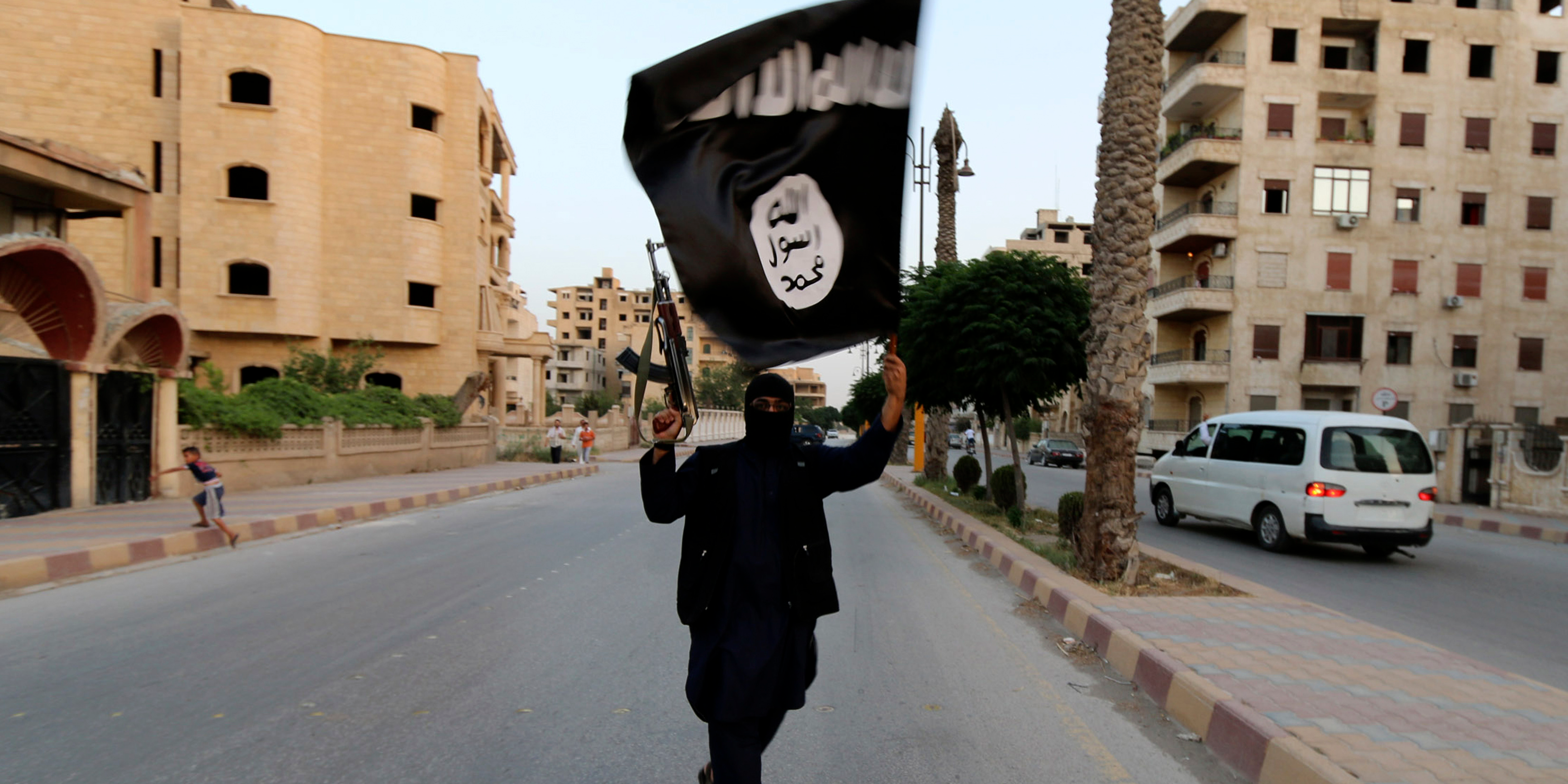- The US declared victory over the Islamic State (ISIS) in March of 2019, but multiple reports show that the group is still active in those countries, and gaining traction elsewhere.
- A blistering Pentagon report blamed Trump’s decision to pull troops out of Syria and cut diplomatic staff in Iraq for the resurgence of ISIS in Syria and Iraq.
- ISIS has branches in Afghanistan, Somalia, Nigeria, the Philippines, and other countries where the group attempts to weaken civilian confidence in the government and stages attacks on military bases or civilians.
- Visit Business Insider’s home page for more stories.
While the Islamic State’s caliphate – the idea of a land ruled by its radical interpretation of Islamic law – ended with US-led coalition campaigns in Iraq and Syria, the group is very much alive and regrouping in Iraq, Syria, and Afghanistan. And its alliances with extremist groups internationally show that the group is adaptable, strategic, and not going anywhere soon.
US power vacuums in Syria and Iraq have allowed ISIS fighters to regroup, and they pose a renewed risk to the region’s stability. But it’s not just Iraq and Syria – ISIS is active in countries all over the world, and in some places it’s growing.
President Donald Trump declared victory over ISIS in March of this year. After prolonged battles against the group in Iraq and Syria, US troops liberated the ISIS stronghold of Bahgouz, Syria in March of this year.

The Syrian Democratic Forces, a US-backed group, was able to defeat a significantly weakened ISIS, which lost its de facto capital, the Syrian city of Raqqa, in 2017.
At its peak, ISIS controlled major cities including Raqqa and Mosul and Fallujah, Iraq. It controlled more than 100,000 square kilometers and about 11 million people in Iraq and Syria during its peak in 2014, according to the RAND Corporation.
But just because ISIS no longer has a caliphate, that doesn't mean it doesn't have influence or power in the places it once controlled — and that it's not still incredibly dangerous.

A blistering Pentagon report blamed Trump's decision to pull troops out of Syria and cut diplomatic staff in Iraq for the resurgence of ISIS in Syria and Iraq.
While the group looks different, it's able to earn money and recruit combatants. The Pentagon report estimates that between 14,000 and 18,000 ISIS combatants remain, and they are carrying out suicide attacks, assassinations, crop burnings, and ambushes in Syria and Iraq.
There are also concerns that ISIS may be growing in Syria's Al-Hol refugee camp, where as many as 70,000 Syrians live in dire conditions. Families who formerly belonged to ISIS, including foreign fighters who came to the region to join the caliphate, are housed here, where experts fear the group can rebuild and recruit.
In both Iraq and Syria, ISIS is making money by kidnapping for ransom, extorting civilians, and skimming funds off rebuilding contracts in war-torn areas. While the group's income is less than it was at its height, its many unregulated income streams make ISIS' finances much harder to track and evaluate.

ISIS has established safe havens in the mountains of Iraq, and has caused "mass civilian displacement" there, according to the Pentagon's report. It's also working to decrease government stability and increase civlian distrust of the government by carrying out targeted assassinations of local officials.
With the group strengthening, Iraq's security forces don't have the capability or infrastructure to fend off ISIS attacks for sustained periods of time, and the government can't access rural areas where ISIS support among civilians is relatively high.
The Pentagon warns of a significant insurgency in Iraq "in the coming months."
In Afghanistan, the group vies with the Taliban for primacy.

As ISIS-Khorasan, the Islamic State wages attacks against civilians in Afghanistan, the most recent a suicide bombing of a wedding in Kabul that left 63 dead.
The UN estimates that it has between 2,000 and 4,000 fighters, and is in competition with the Taliban for recruits, with many former Taliban joining ISIS-K to fulfill their desire for jihad as the Taliban becomes an increasingly political force.
National security experts warn that ISIS-K is a grave threat to the US and other Western countries.
"The US should be very concerned about ISIS using Afghanistan to stage attacks on the West," Jennifer Cafarella, Research Director at the Institute for the Study of War, previously told Insider.
"The conduct of external attacks is core to the very nature of the ISIS organization, and the provinces ISIS creates abroad do adopt this goal."
ISIS-Khorasan in Afghanistan and Pakistan has links to other extremist groups in the region.

ISIS-K "has a universe of relationships with other militant organizations across Afghanistan and Pakistan which provide it with ideological, logistical and operational support," Amira Jadoon, an expert on terrorism at the Combatting Terrorism Center at West Point, told Insider, increasing the group's reach throughout Afghanistan and Pakistan.
Alliances with groups like the Islamic Movement of Uzbekistan and Lashkar-e-Islam provide ISIS-K with support, whether it's ideological, material in terms of weapons or manpower, or logistical - staging attacks together.
ISIS also has a major affiliate in Africa — a group calling itself Islamic State West African Province (ISWAP), which split from Nigerian terror group Boko Haram in 2016.

ISWAP has approximately 3,500-5,000 members and maintains support from ISIS, which Crisis Group reports has provided ISWAP with trainings and claims ISWAP's targets (mostly the Nigerian government and military) as its own.
ISWAP has popular support, particularly in places where the government cannot provide support like healthcare.
The Islamic State in Somalia expanded its operations starting in 2018.

While the Islamic State in Somalia is reported to have only a few hundred members, according to the Combating Terrorism Center at West Point, it's made gains against its regional terrorist rival, al-Qaeda-backed Al-Shabaab.
Islamic State in Somalia has begun collecting revenue by means of taxation and extortion, and claimed 66 operations in Somalia in 2018, more than in the previous two years combined. It has also made inroads in Mogadishu, outside its base in the north of Somalia. It has drawn at least one US resident who allegedly planned to head to Somalia to fight for IS there before he was arrested by US law enforcement.
While it's unclear if Islamic State in Somalia can keep up the pace of its expansion in the face of pushback from Al-Shabaab, its rapid gains are troubling.
The Islamic State is making significant inroads in parts of the Philippines.

The Mindanao island chain in the Philippines is considered the Islamic State's eastern province, carrying out a bombing on a Catholic church in January 2019, despite Philippines President Rodrigo Duterte saying that the group had been defeated in the Philippines.
"ISIS has money coming into the Philippines, and they are recruiting fighters," Rommel Banlaoi, chairman of the Philippine Institute for Peace, Violence and Terrorism Research, told The New York Times.
The poorly-policed seas and jungles of the area, combined with a government unwilling to admit it has an insurgency on its hands, create fertile ground for ISIS to grow in the Philippines.
ISIS also claims cells in Libya, Egypt, Yemen, Saudi Arabia, Algeria, Tunisia, Burkina Faso, and the Caucasus.

However, their presence in these countries is less than that of places like Syria and Afghanistan.

